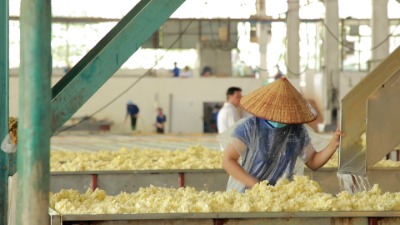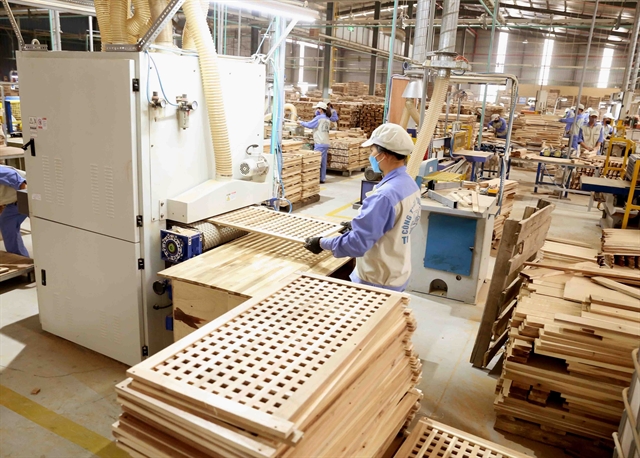 Economy
Economy

 |
| Green production in the wood industry will be key to increase orders and revenue from export activities. —VNA/VNS Photo |
HÀ NỘI — General Secretary of Việt Nam Timber and Forest Products Association (Viforest) Ngô Sỹ Hoài said that the wood industry needs to pay attention to green production and trade to increase exports.
According to Hoài currently, many major markets are strengthening the enforcement of import regulations as well as important technical barriers for products from exporting countries.
For example, EU countries have requested exporters to meet regulations at the Carbon Border Adjustment Mechanism (CBAM). Goods imported into the EU will be imposed with a carbon tax and businesses must convert to lower-emission production models to get carbon credits.
Viforest is encouraging businesses to ensure green production, green trade and digital transformation. Sustainable development will be key to increase orders and revenue from export activities.
The association has been conducting many trade promotion activities at home and abroad to seek more customers and orders.
The EU Deforestation Regulation (EUDR) is coming into effect soon, so the association is also planning to organise training courses on implementing accountability, ensuring legal timber could join in supply chains and green transition.
Hoài also said that in the first three months of this year, the export of timber and wood products reached US$3.5 billion, an increase of 25.4 per cent over the same period in 2023. Of which, the export turnover of wood products was $2.4 billion, an increase of 30.8 per cent. The main markets were still the US, China, Japan, South Korea and the EU.
At the same time, businesses spent $535.7 million to import wood materials, an increase of 15.3 per cent over the same period in 2023.
The industry saw positive business results in the first three months of the year, but it cannot be confirmed the market to recover well. This year is still a very difficult year for the wood processing businesses, according to Hoài.
Meanwhile, large markets, such as the US, EU, China, Japan, and South Korea, are still heavily affected by issues related to geopolitical conflicts, economic recession, and consumers losing confidence.
The US market has accounted for 50-55 per cent of Việt Nam's total export value of wooden furniture.
However, the frequency of lawsuits and investigations relating to trade defence measures on wood products of Vietnamese origin is increasing, so Vietnamese wood processing businesses face many risks.
On the domestic market, many firms still have difficulty in getting value-added tax (VAT) refunded and complying with new fire prevention and fire fighting standards.
Many factories built 20 to 30 years ago are now located in densely populated areas. Some localities have policies on moving wood processing facilities away from residential areas, so the businesses cannot invest large sums of money in fire prevention.
In that situation, the business environment needed to be reformed to encourage the businesses to develop production and business, Hoài said.
The enterprises themselves also needed to improve their management capacity and strengthen their ability to comply with regulations related to forests and wood in Việt Nam and foreign markets.
In addition, they needed to improve their ability to cope with the trade defence measures in large markets.
The businesses also expected value-added tax refunds to be implemented faster, and the state agencies to have feasible solutions for them in complying with fire prevention regulations.
According to the Prime Minister's direction, the preferential credit package for the wood and seafood industry of VNĐ15 trillion has been increased to VNĐ30 trillion.
Viforest hopes banks will support the businesses by having simpler and more flexible procedures so that wood and seafood businesses can effectively and promptly access this capital source.
Việt Nam aims to gain a value of $15 billion from exporting timber and wood products this year. — VNS




